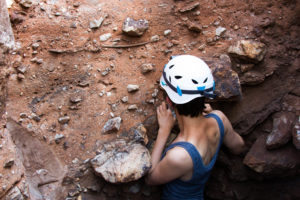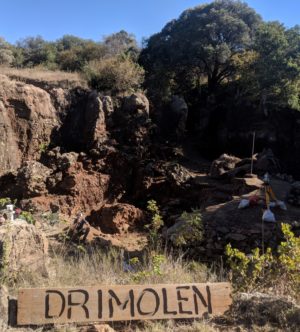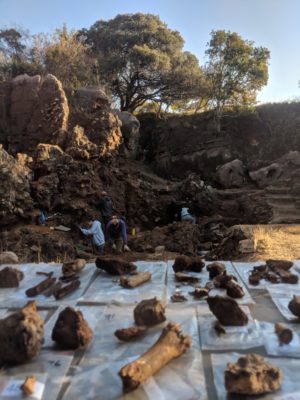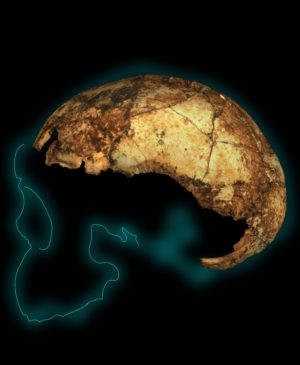 La Trobe University PhD student Angeline Leece in front of fossil bearing brecccia at Drimolen. Jesse Martin
La Trobe University PhD student Angeline Leece in front of fossil bearing brecccia at Drimolen. Jesse Martin
Science—Nearly 2 million years ago, three hominin genera – Australopithecus, Paranthropus and the earliest Homo erectus lineage – lived as contemporaries in the karst landscape of what is now South Africa, according to a new geochronological evaluation of the hominin fossil-rich Drimolen Paleocave complex. Combined with other evidence, authors Andy Herries et al. argue that the site reflects a period of transition in southern Africa driven by climatic variability, one marked by endemic species, like Australopithecus, going extinct, while new migrants – Homo and Paranthropus – moved in. In their study, Herries and colleagues describe the geological context and age of two hominin crania fossils recently recovered from the Drimolen, representing Homo and Paranthropus. Using a combination of electron spin resonance, paleomagnetism and uranium-lead dating, Herries et al. pieced together the chronology of the Drimolen Main Quarry (DMQ). The results show that the Homo and Paranthropus fossils recovered from the region date to 2.04-1.95 million-years-old, which establishes both as the oldest definitive examples of their respective species (H. erectus and P. robustus). “If correct, Herries [et al.’s] results provide the most precisely dated remains in South Africa [and] add more than a hundred thousand years to the first appearance dates of at least H. erectus,” writes Susan Antón in a related Perspective. The crania ages also indicate that early Homo and Paranthropus hominins lived at the same time as their older Australopithecus cousins roughly 2 million years ago, which suggests a period of transition at the site; as endemic species, like Australopithecus, went extinct, new migrants – Homo and Paranthropus – moved in, the authors suggest. What’s more, the relative simplicity of the geological context of DMQ as revealed by the new geochronological techniques challenges the perceived complexity of other similarly aged South African paleocave sites, suggesting that much of what is known about the stratigraphy in these hominin-bearing sites may need to be reevaluated, according to the authors.
__________________________

La Trobe University PhD student Angeline Leece in front of fossil bearing brecccia at Drimolen. Jesse Martin
__________________________

The drimolen fossil site. Andy Herries
__________________________

The Drimolen excavations and excavated fossils. Andy Herries
__________________________

DNH 134 (Homo erectus) cranium, excavated from Drimolen, with stylized projection of the outline of the rest of the skull. Andy Herries, Jesse Martin and Renaud Joannes-Boyau
__________________________
Article Source: Science news release
This research appears in the 3 April 2020 issue of Science.
Science is published by AAAS, the nonprofit science society.
__________________________
Advertisement




